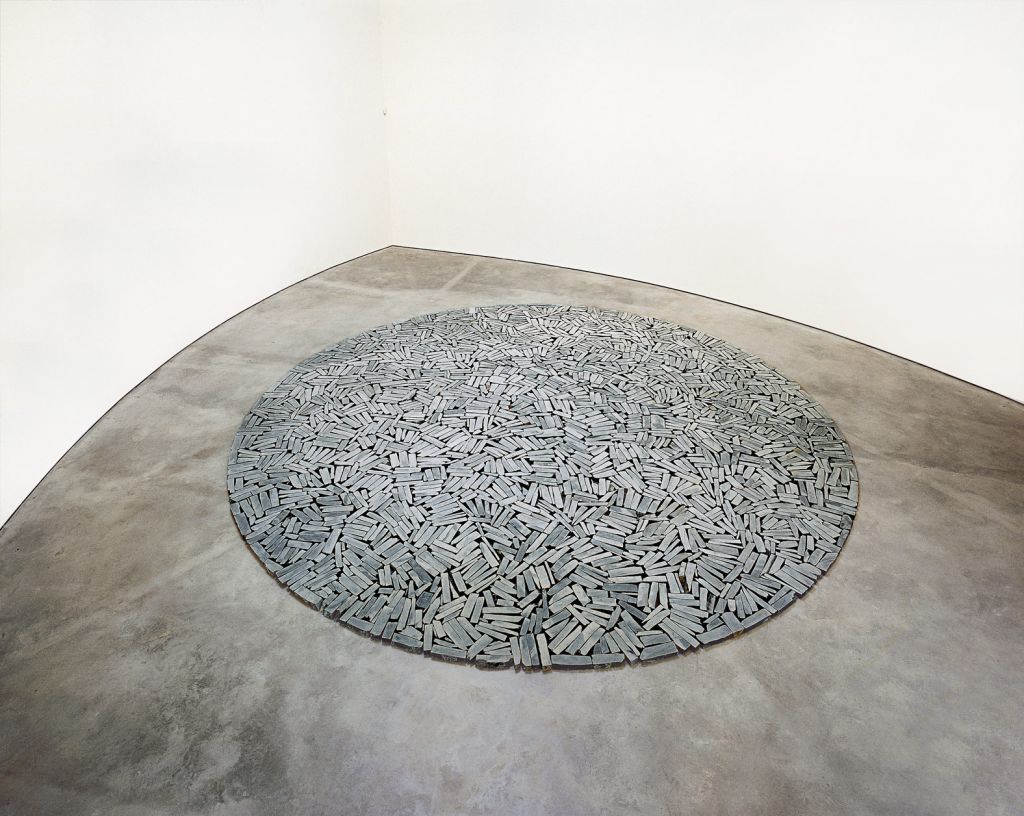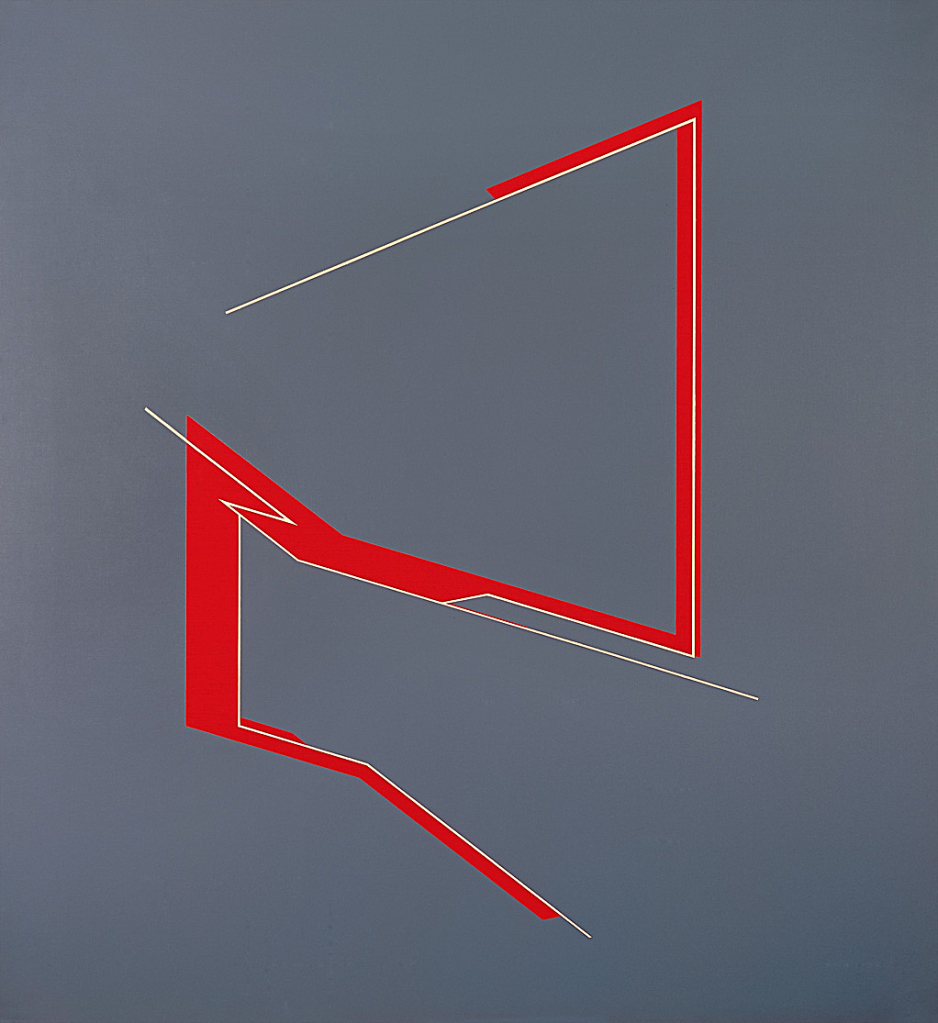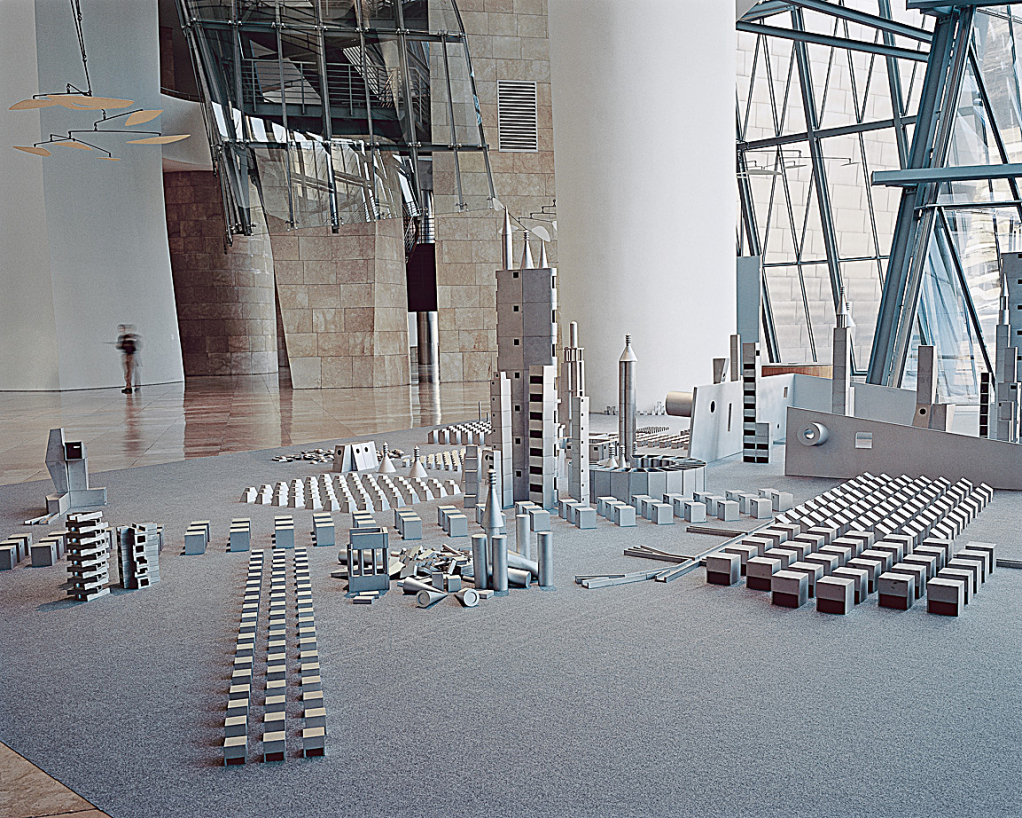Villa Borghese
1960Oil on canvas206.5 x 181.4 x 8.2 cm
Although often cited as the originator of Action painting, an abstract, purely formal, and intuitive means of expression, Willem de Kooning most often worked from observable reality, primarily from figures and the landscape. From 1950 to 1955 de Kooning completed his famous Women series, integrating the human form with the agressive paint application, bold colors, and sweeping strokes of Abstract Expressionism. These female "portraits" provoked controversy not only for their vulgar carnality and garish colors, but also because of their embrace of figural representation, a choice deemed regressive by many of de Kooning's Abstract Expressionist contemporaries, but one to which he returned repeatedly over the course of his career.
In the latter half of the 1950s de Kooning turned to the landscape as the basis for a series of abstract compositions. At first these reflected the urban surroundings of his studio in downtown Manhattan: in a series of energetic, heavily worked paintings that the critic Thomas Hess termed "abstract urban landscapes" (1955–58), de Kooning conveyed the frenetic pace of city life without representing any identifiable forms or figures. Toward the end of the decade, as he began to spend more time working in East Hampton on Long Island—where he would ultimately move in 1963—the referent for his paintings became increasingly pastoral. This change in subject matter was accompanied by a corresponding formal shift, as the frenzied proliferation of forms and planes that had characterized the abstract urban landscapes yielded to compositions of relative restraint and clarity, with broad brushstrokes reminiscent of the paintings of de Kooning's friend Franz Kline.
One of the very few large-format paintings produced by de Kooning in 1960, Villa Borghese was based on the artist's encounter not with New York or its environs but with Rome, where he spent roughly five months in 1959–60. The location is alluded to not only by the painting's title, which refers to a large and well-known public park in the Italian capital, but also by its bright Mediterranean palette. The expansive areas of color, painted in wet-on-wet layers, suggest naturalistic correspondences—yellow sunlight, blue sky and water, and green grass and foliage. Executed after de Kooning's return to New York, the painting is not a rendering of a particular view, however, but rather a subjective translation into paint of his memories of the Eternal City.
Sources:
Bridget Alsdorf. "Willem de Kooning." In Nancy Spector, ed. Guggenheim Museum Collection: A to Z. 3rd rev. ed. New York: Guggenheim Museum, 2009.
Guillermo Solana. "Willem de Kooning." In Guggenheim Museum Bilbao Collection. Bilbao: Guggenheim Museum Bilbao; Madrid: TF Editores, 2009.
Original title
Villa Borghese
Date
1960
Medium/Materials
Oil on canvas
Dimensions
206.5 x 181.4 x 8.2 cm
Credit line
Guggenheim Bilbao Museoa






